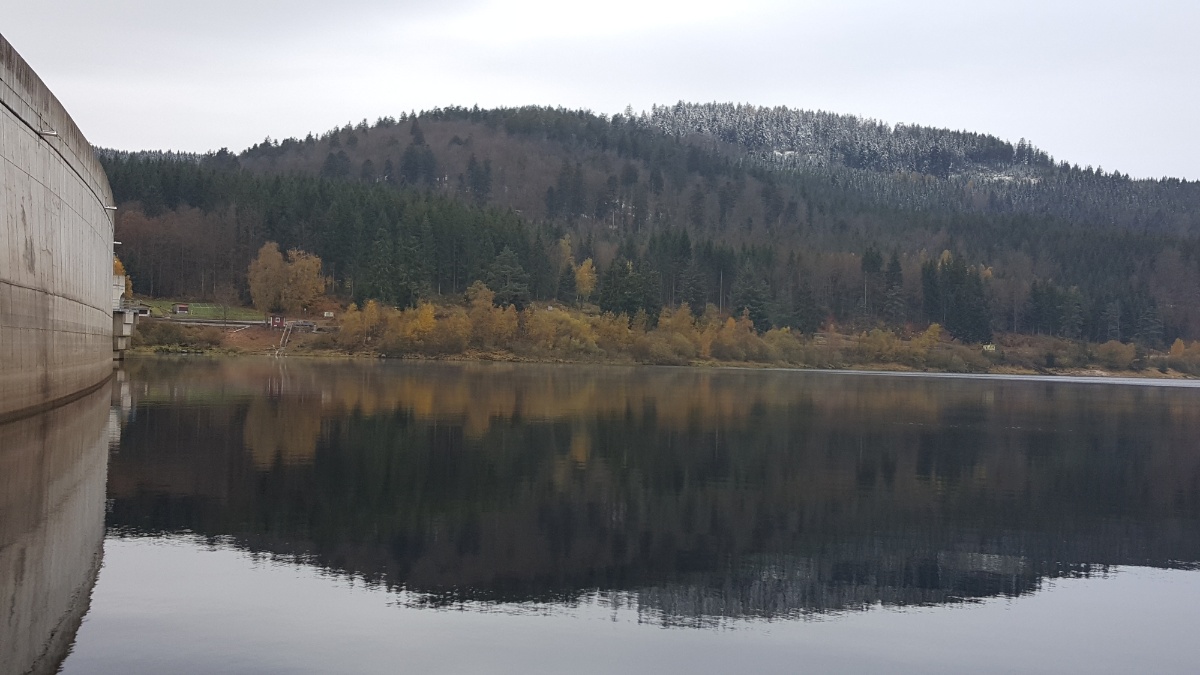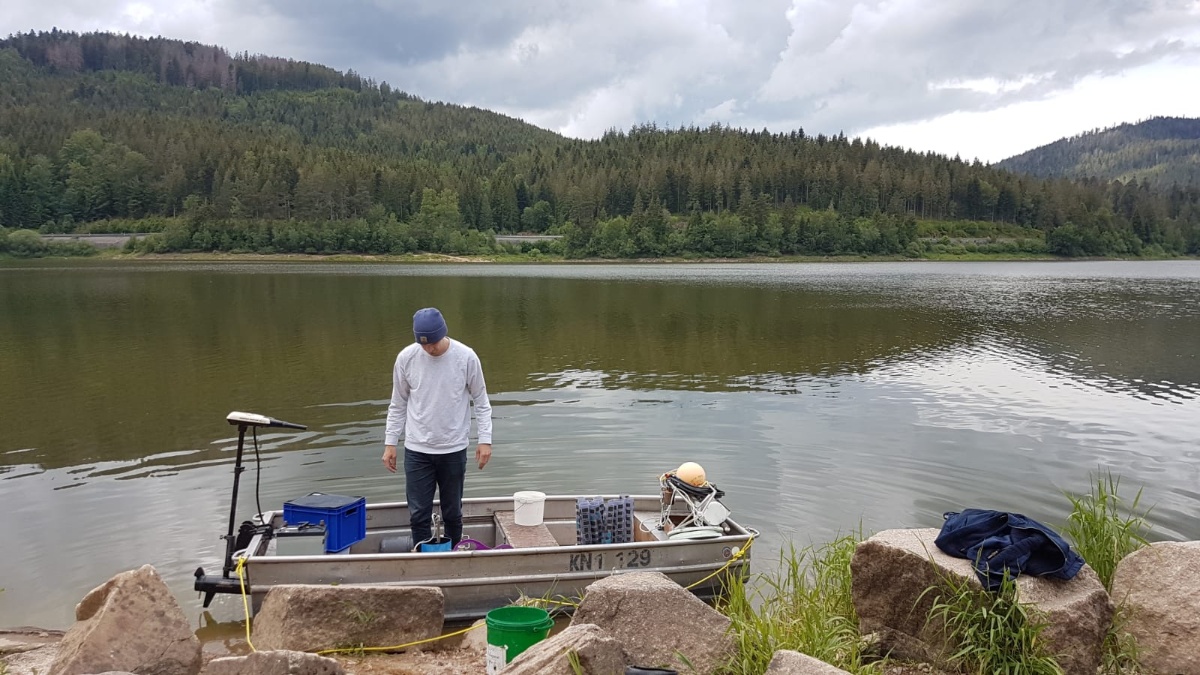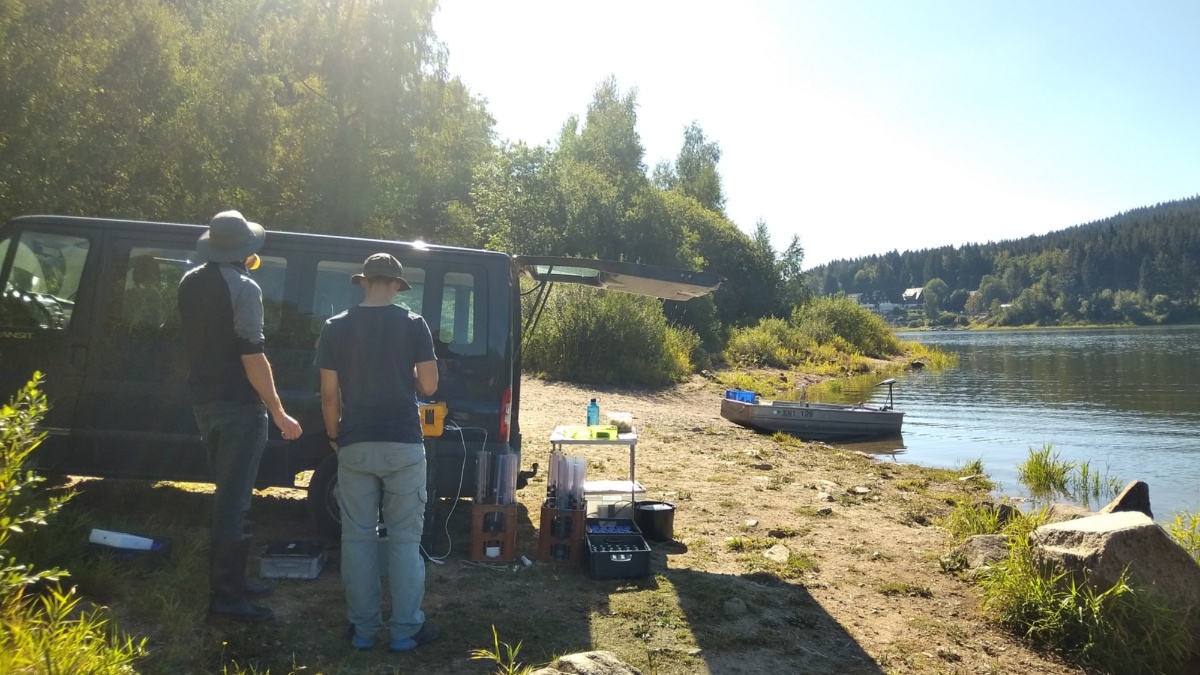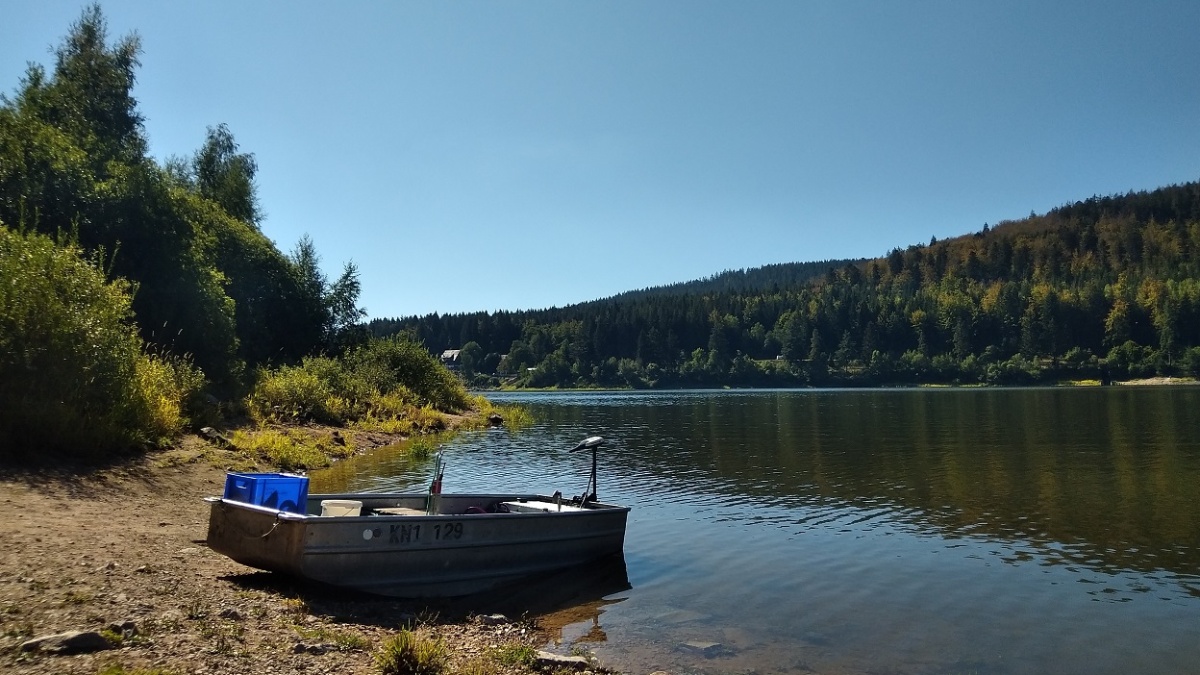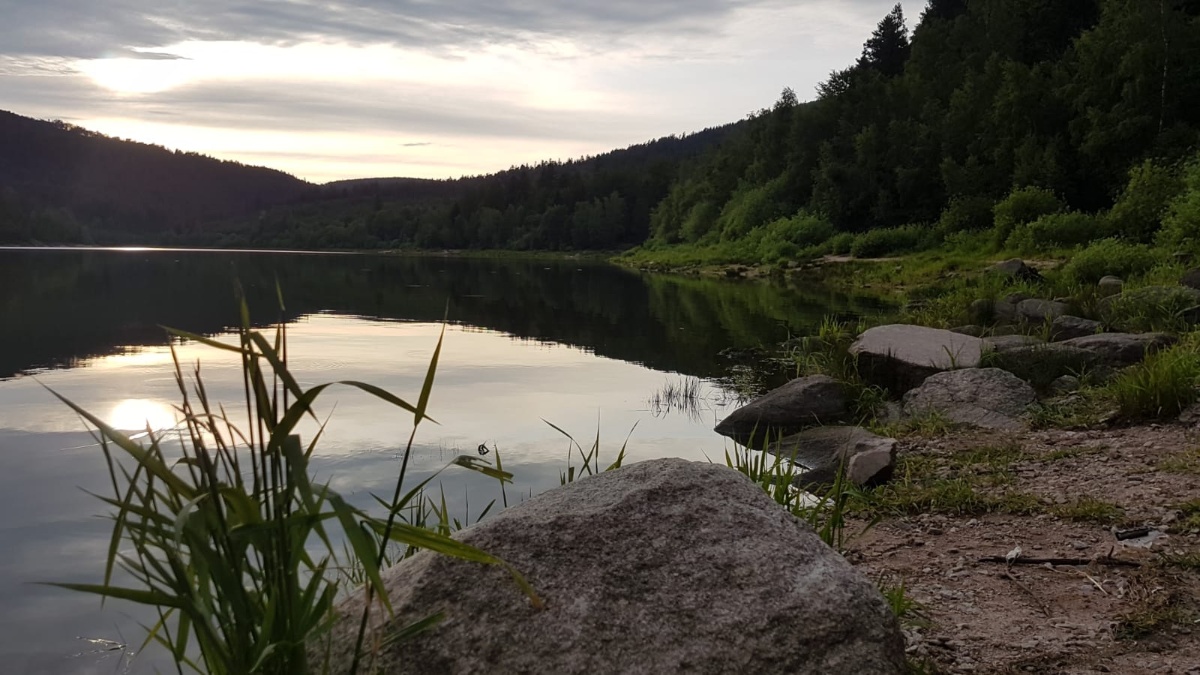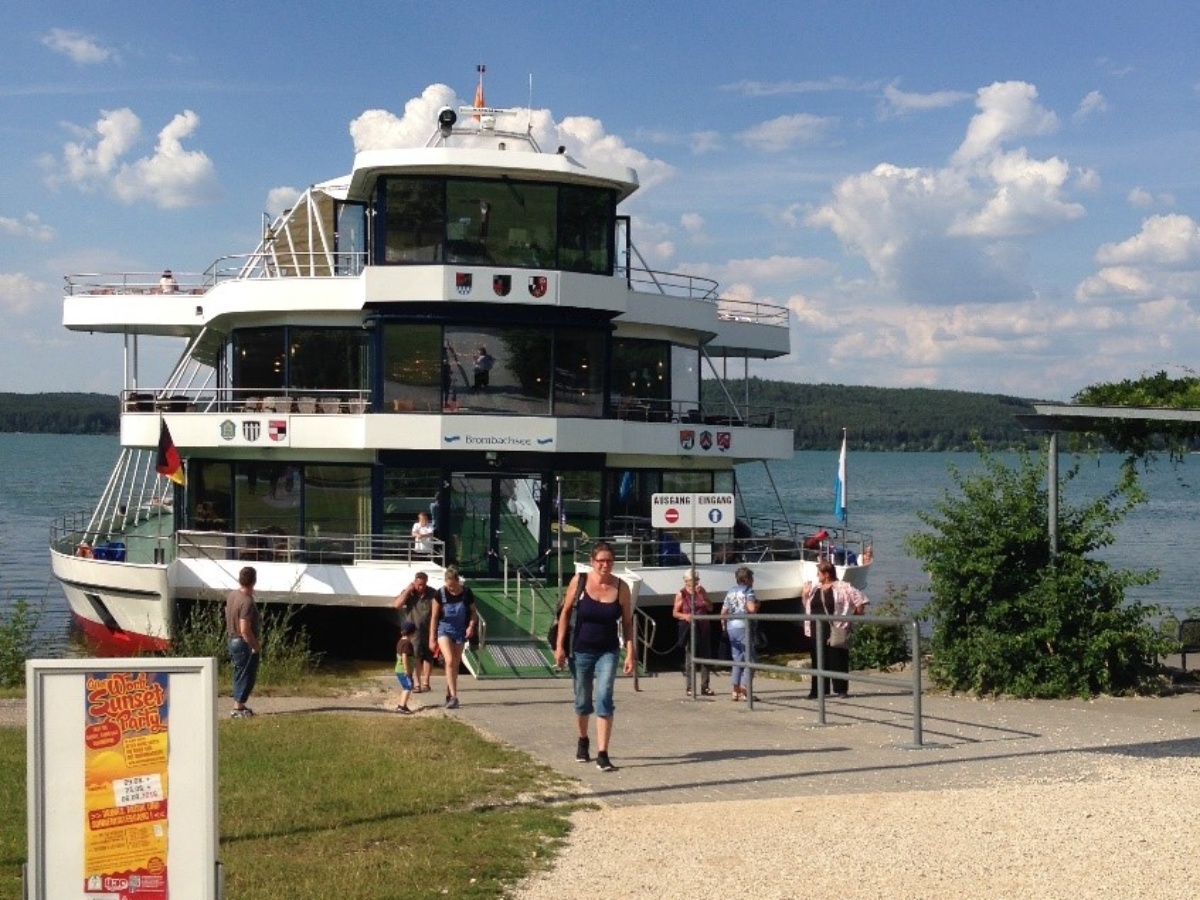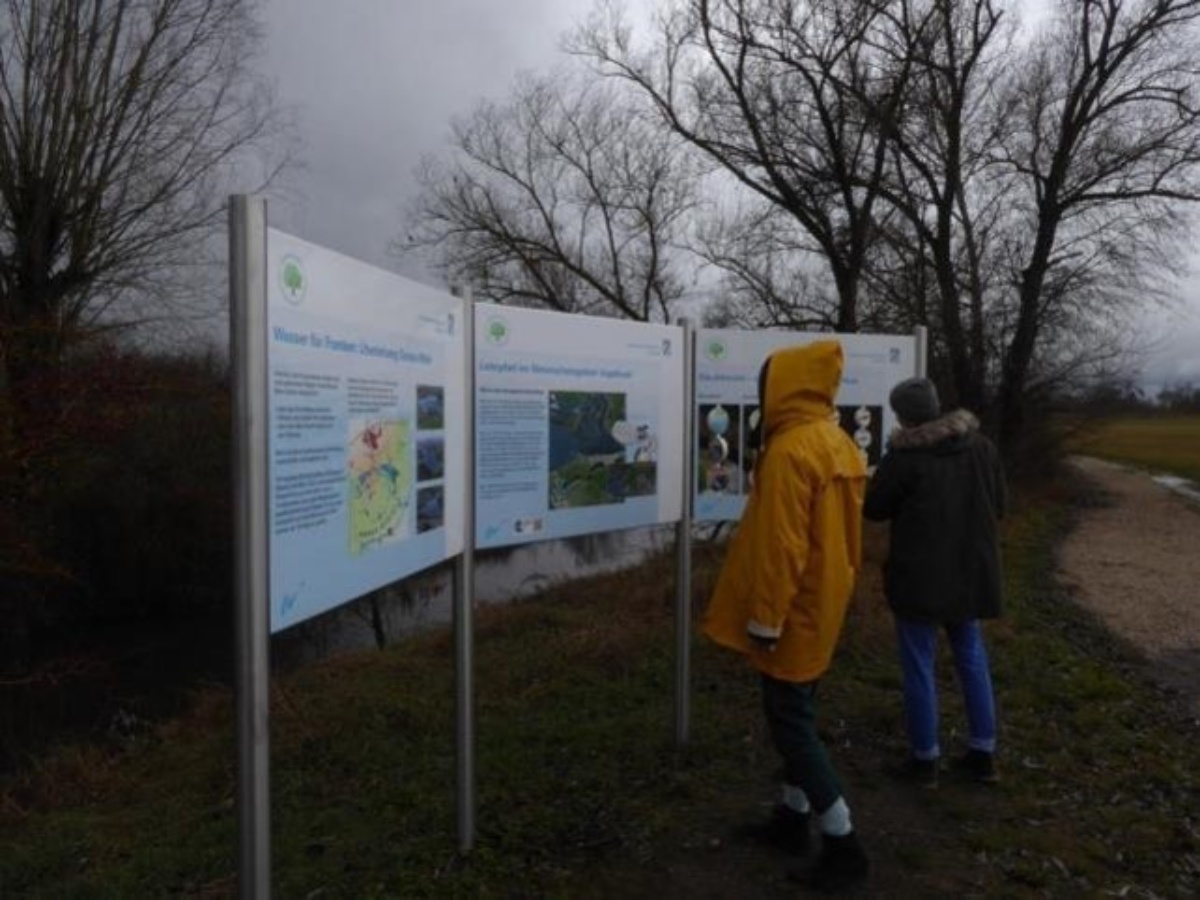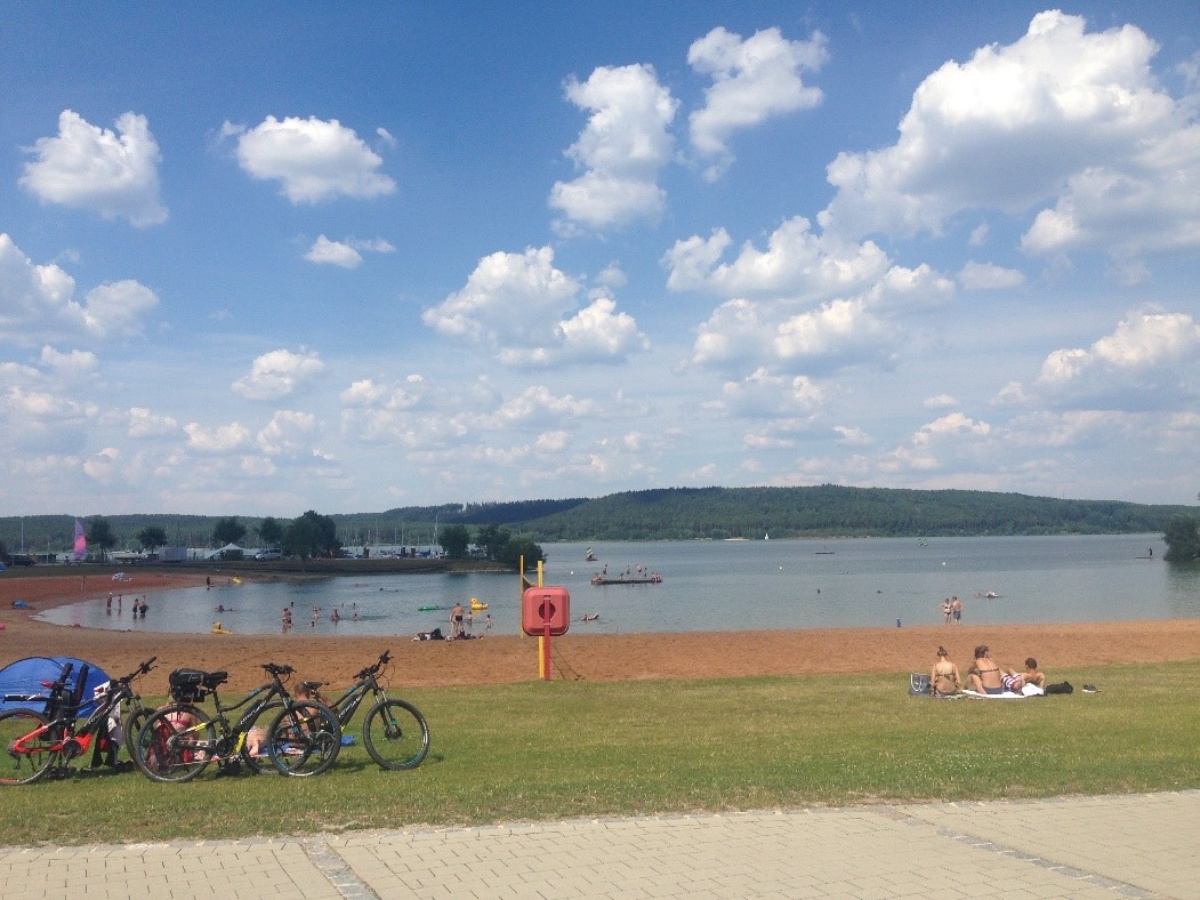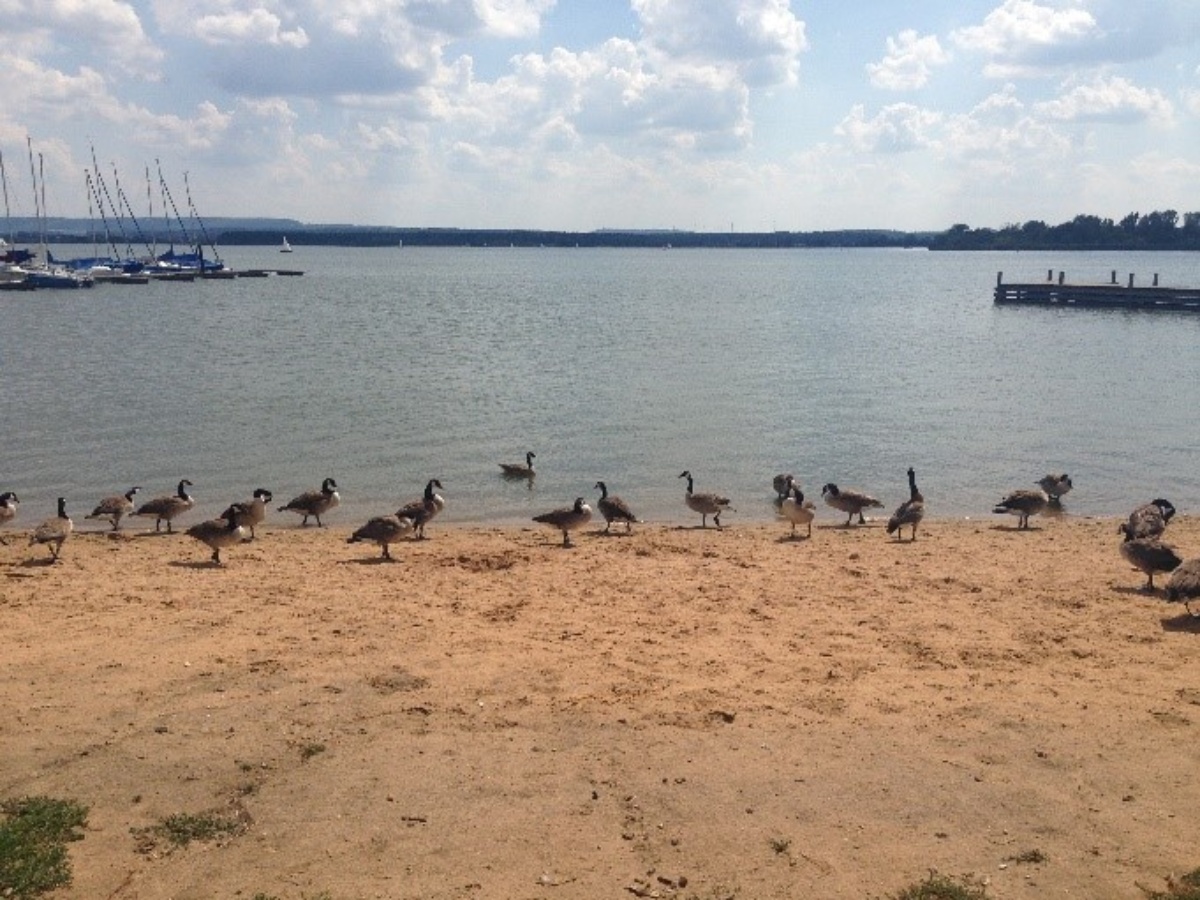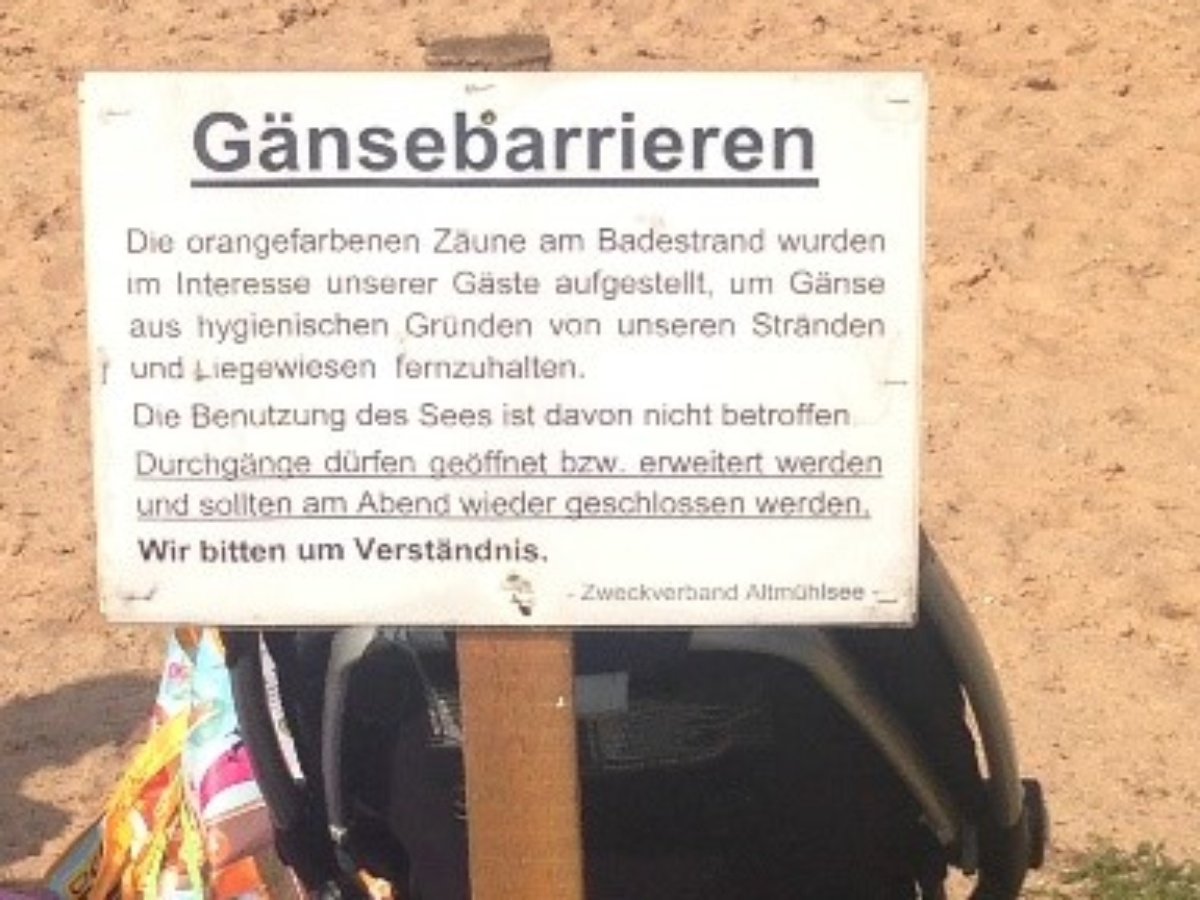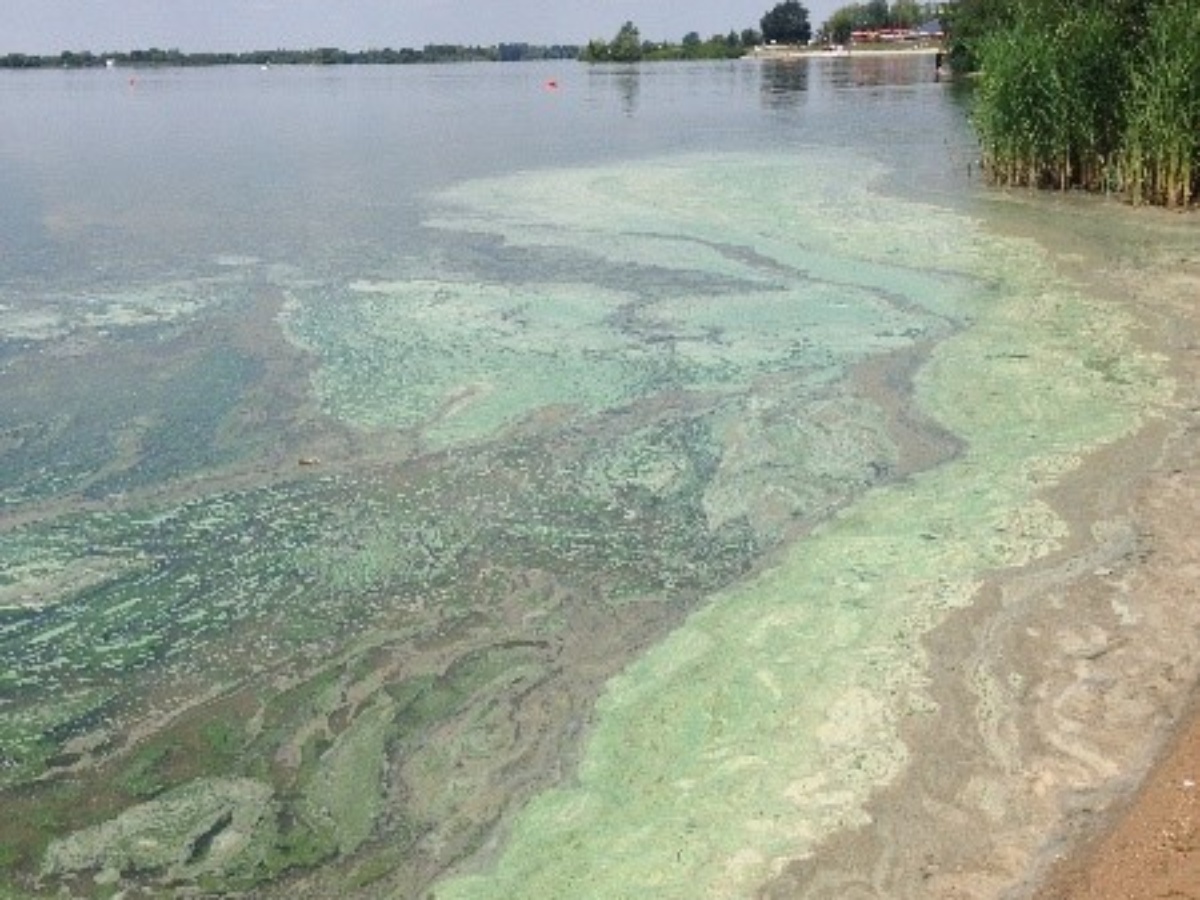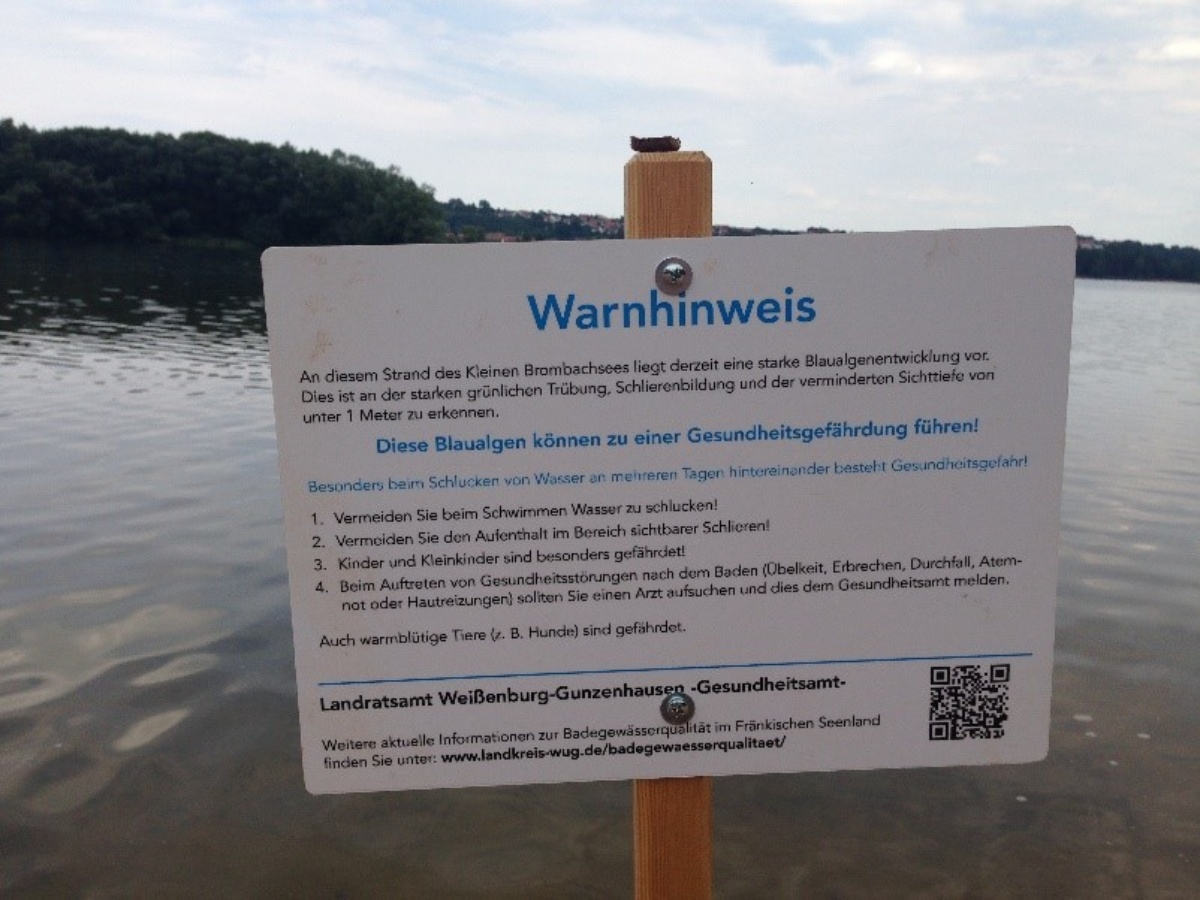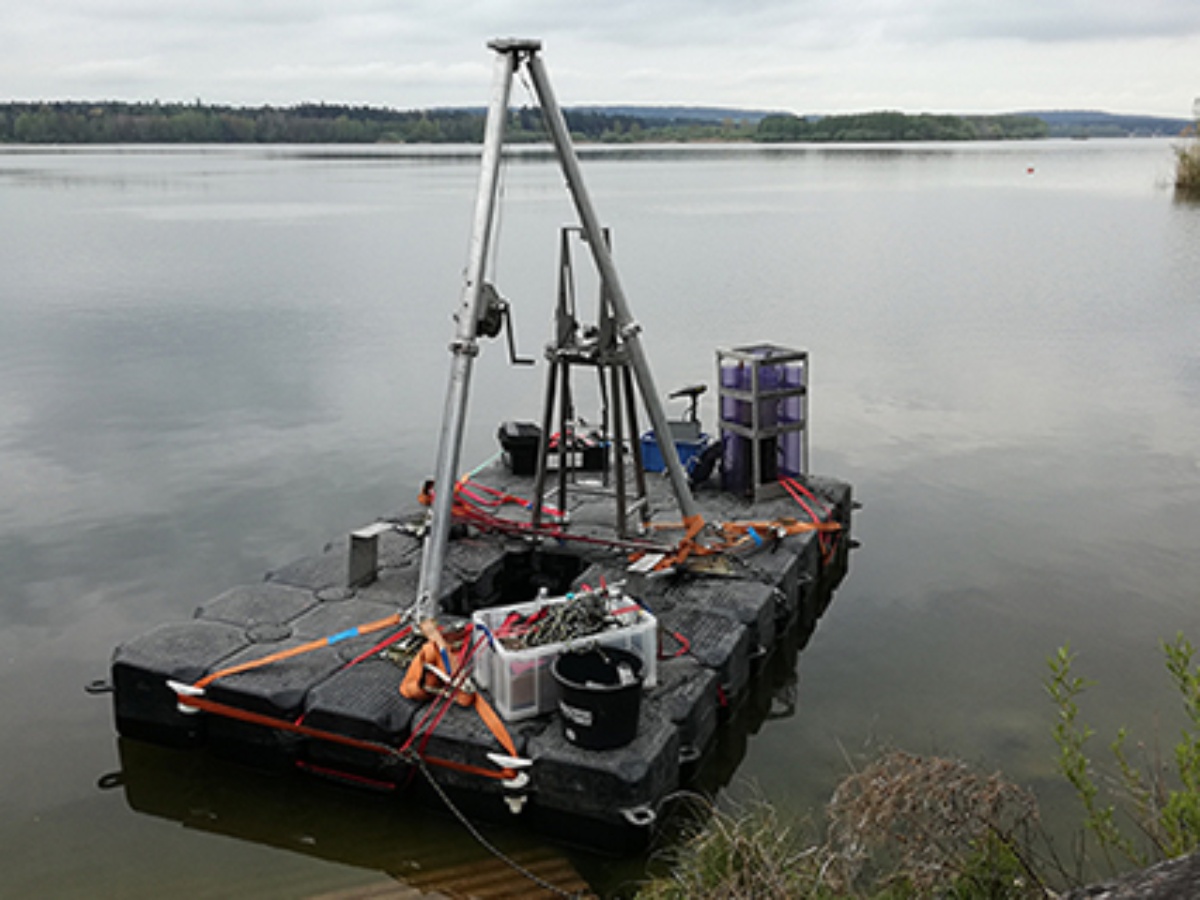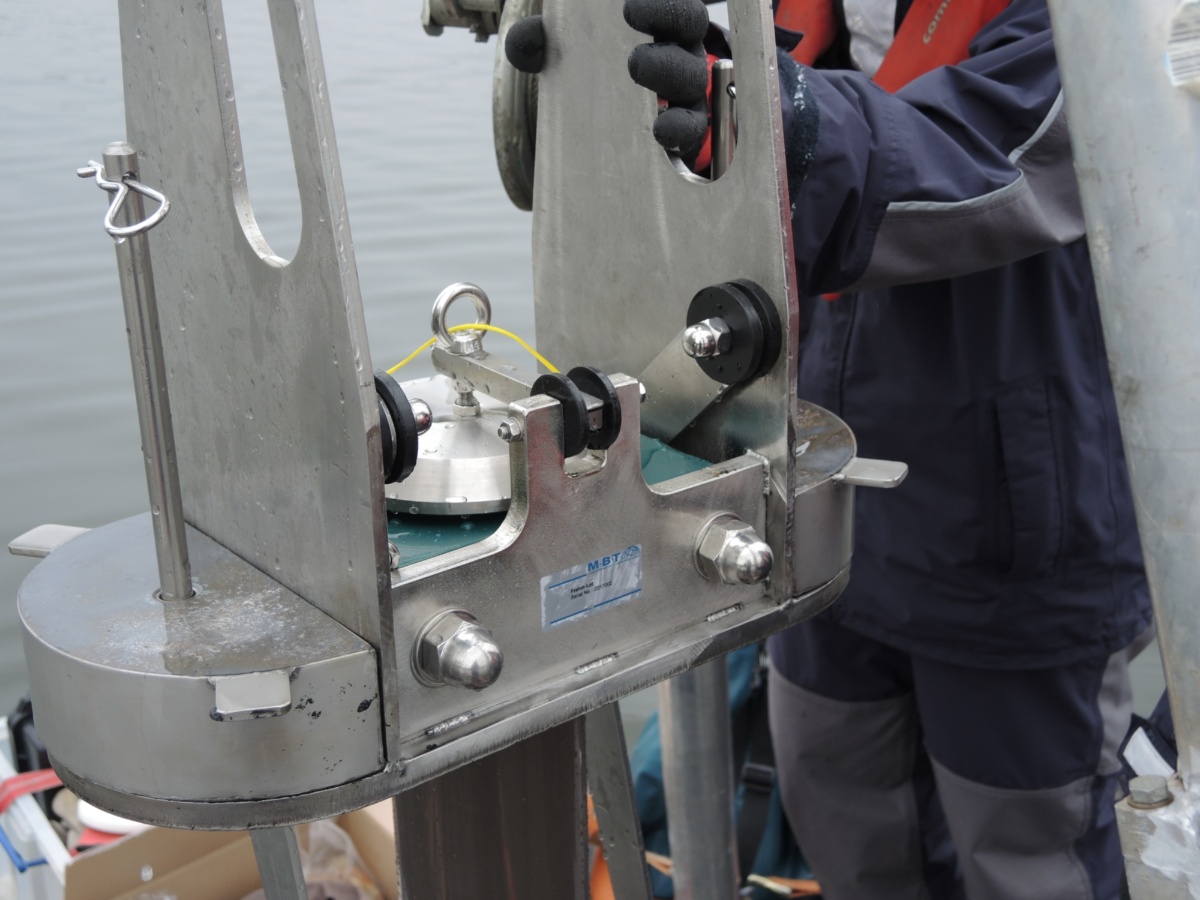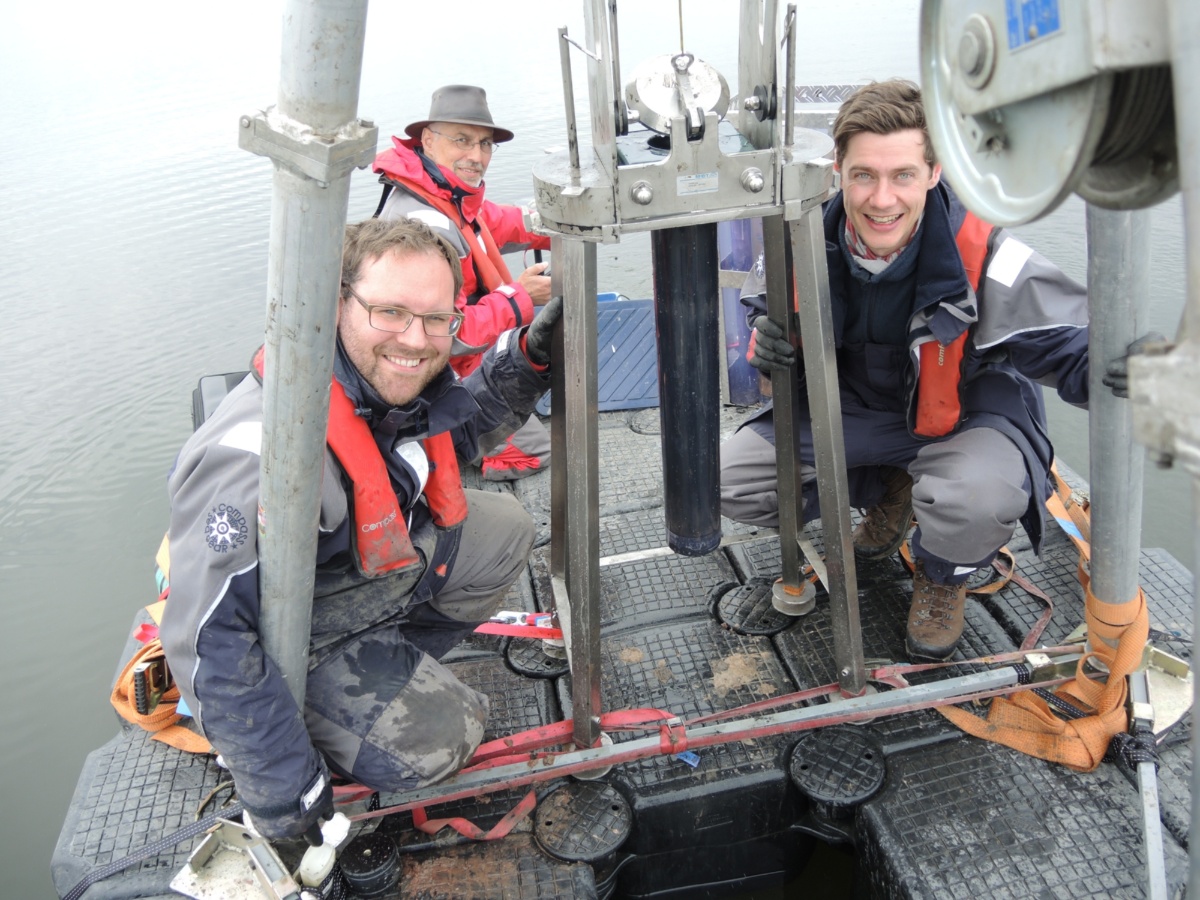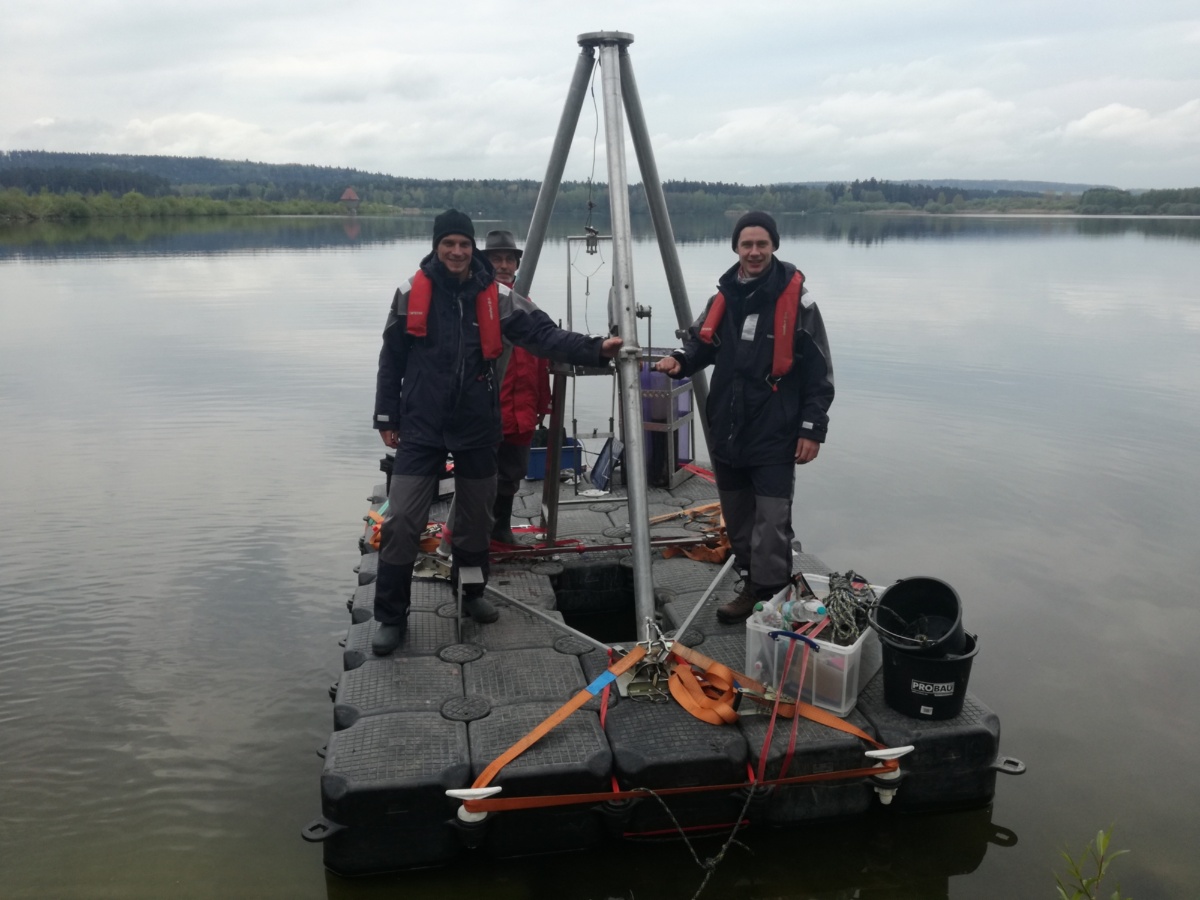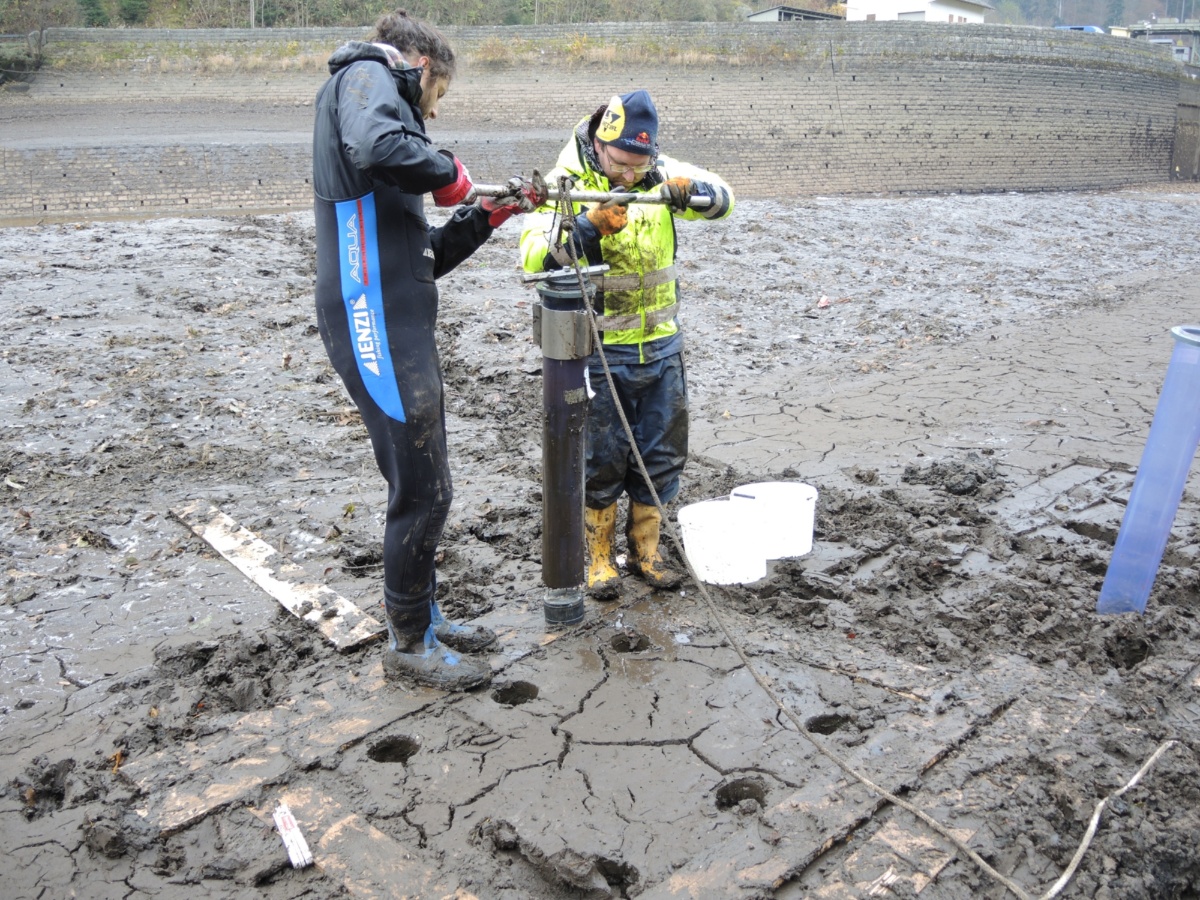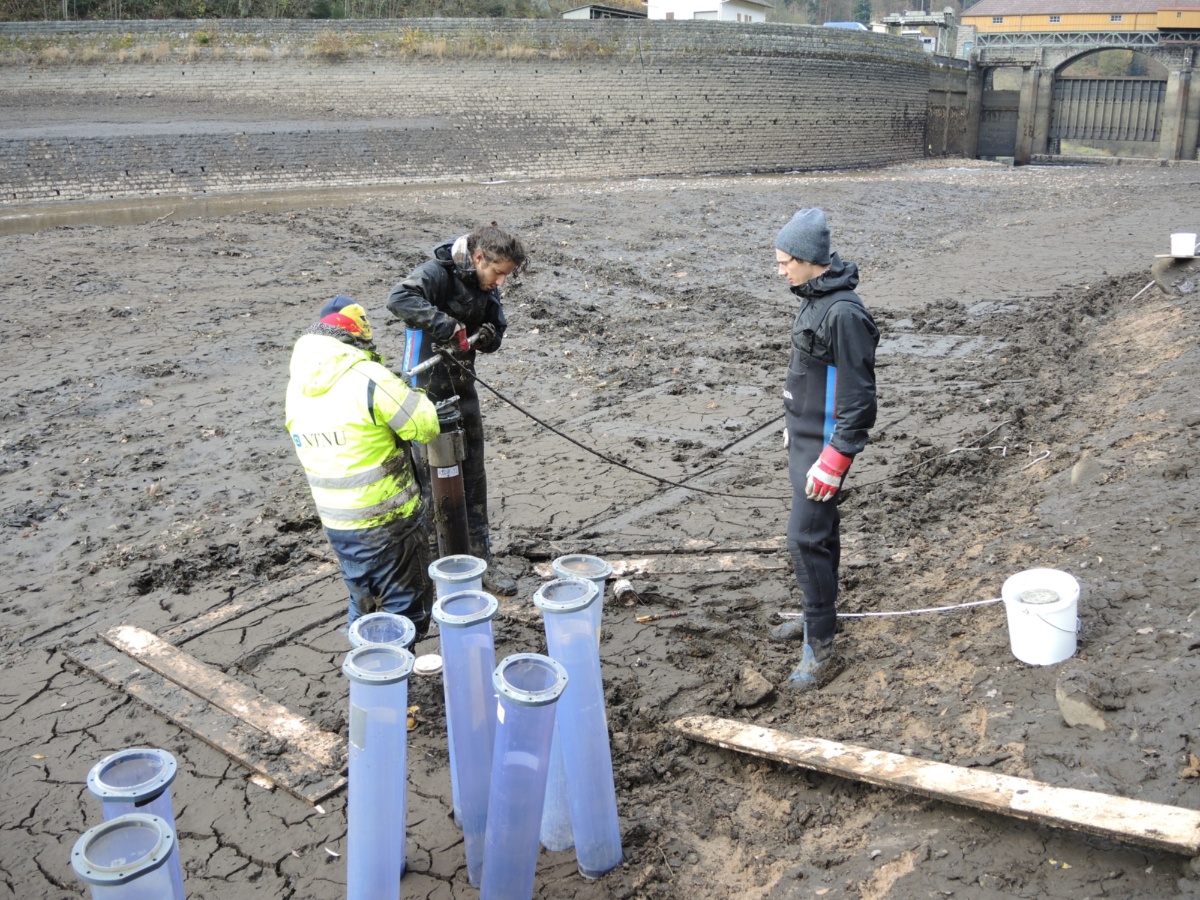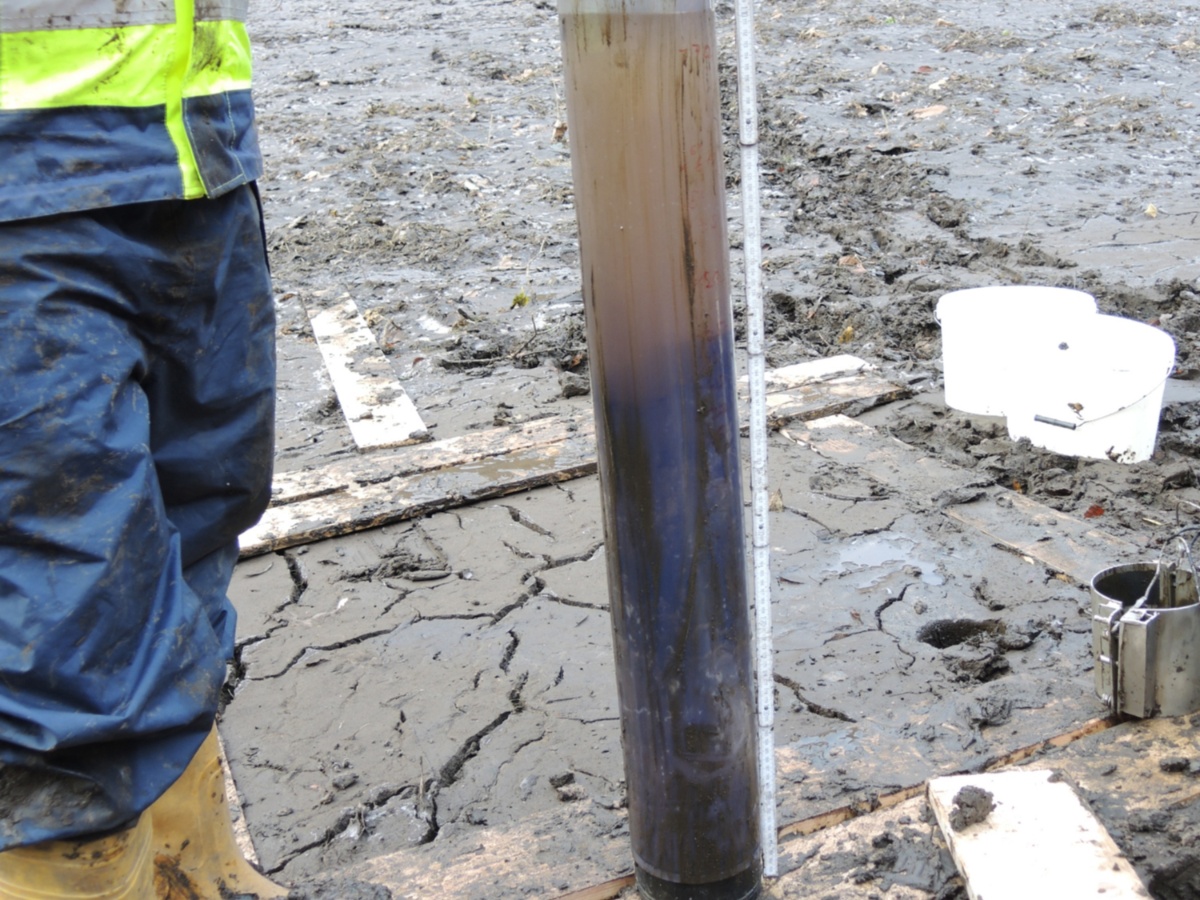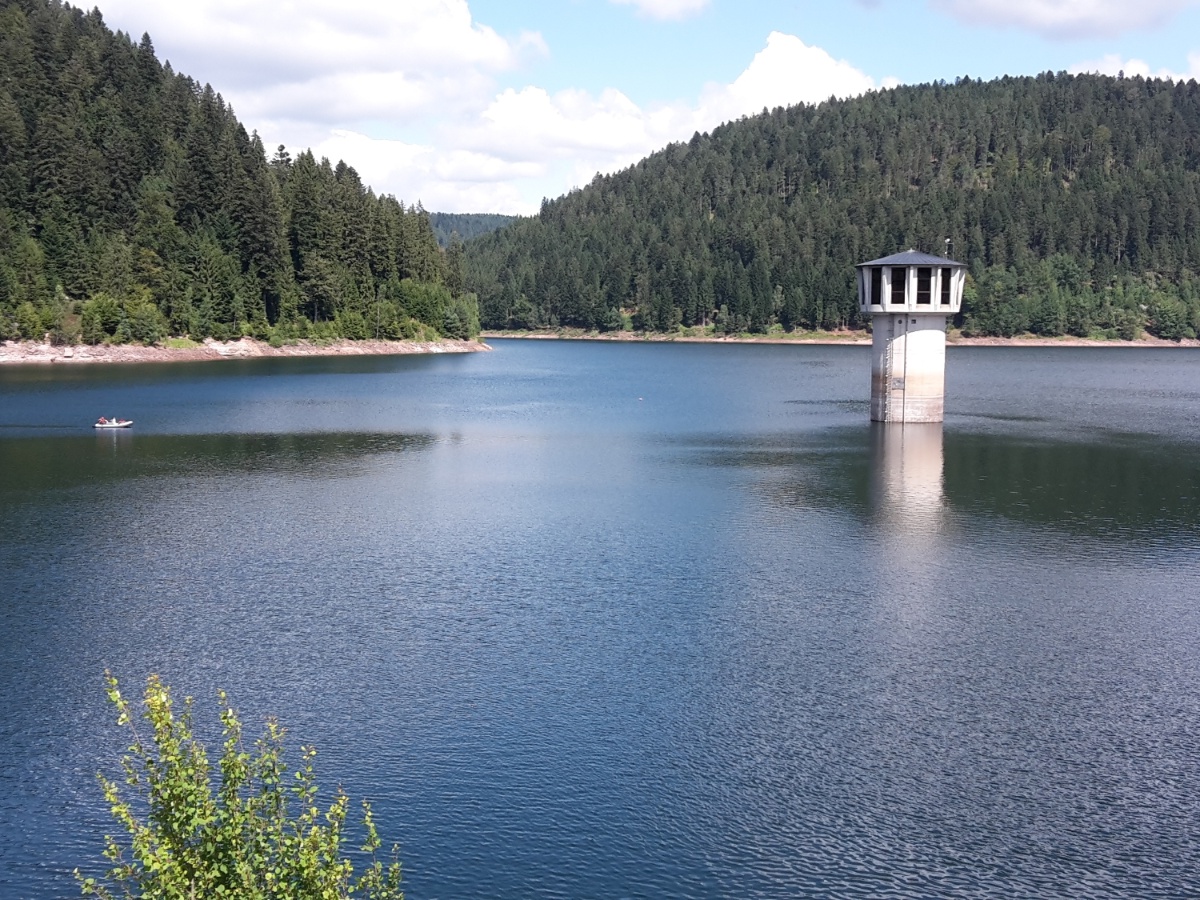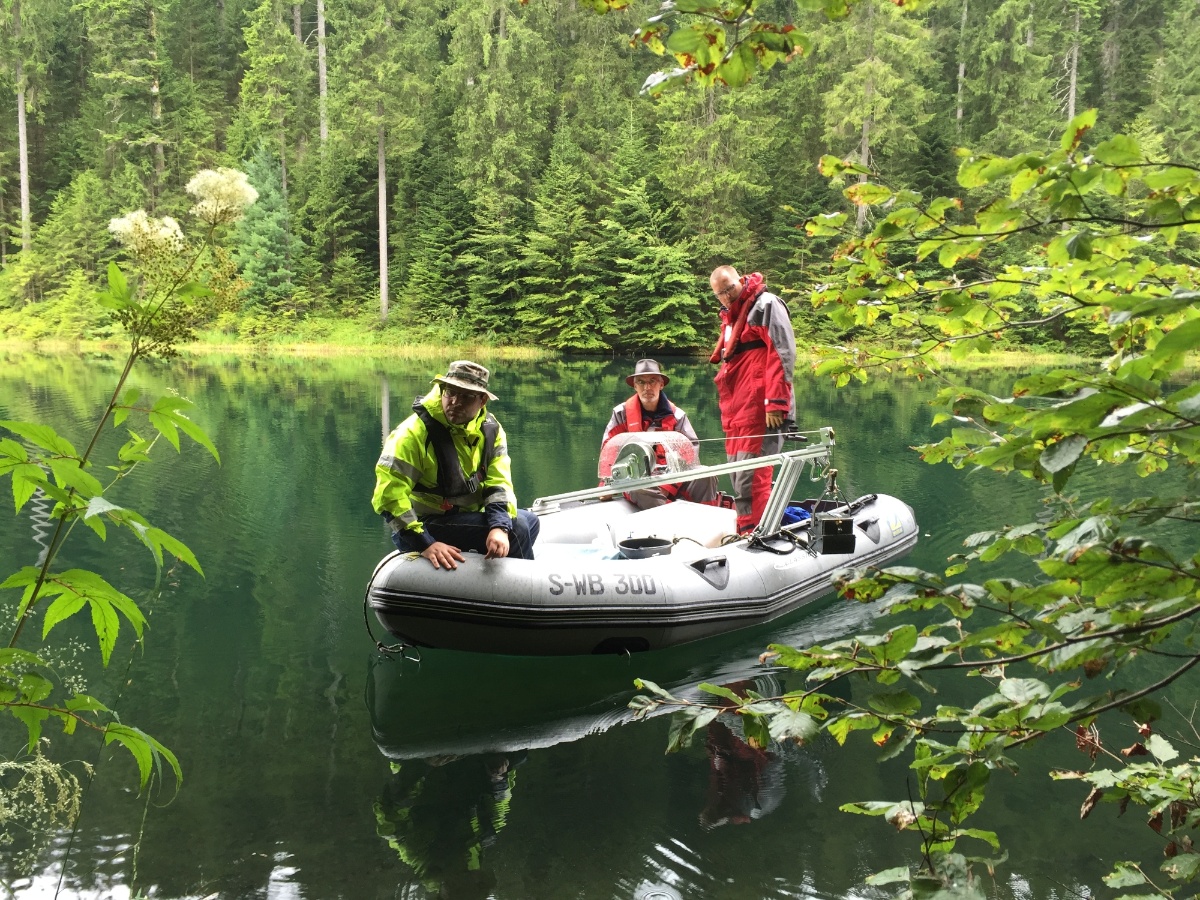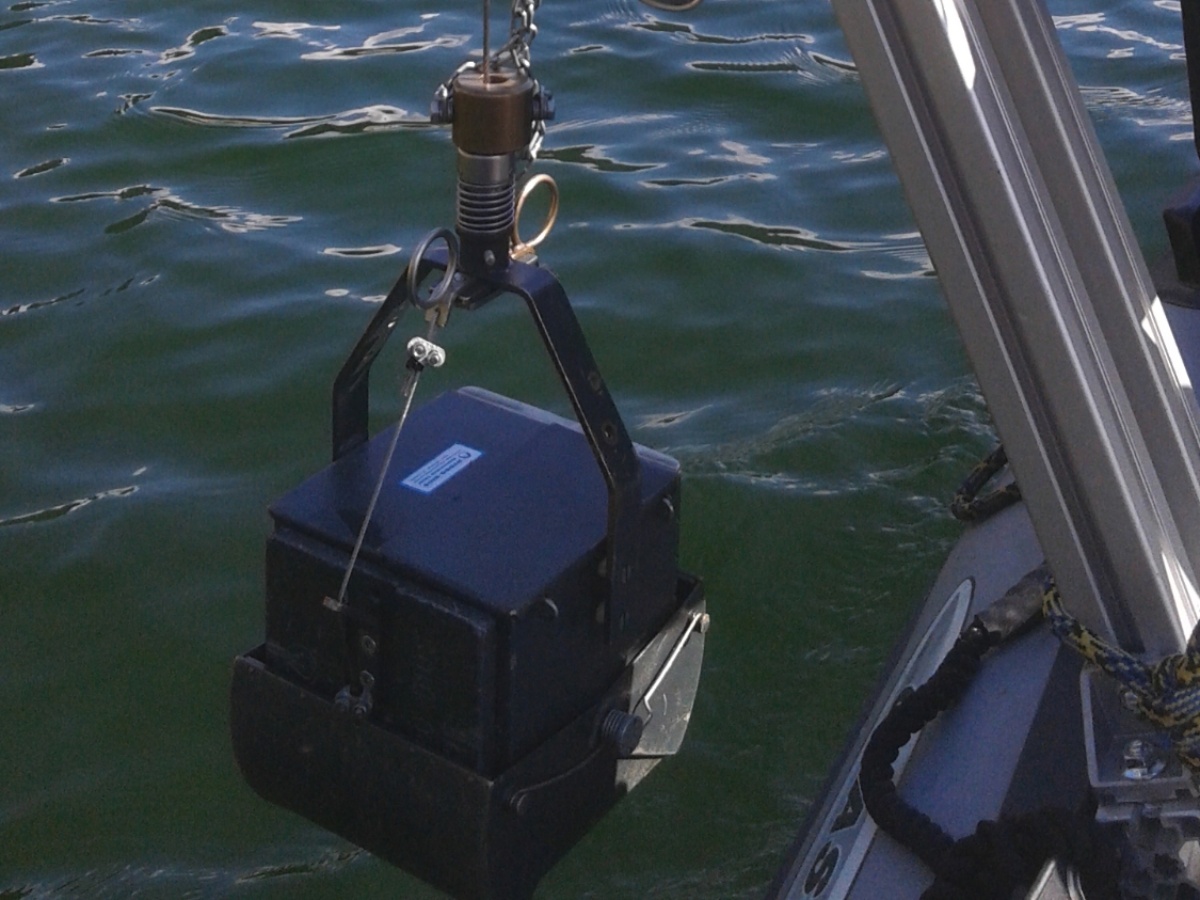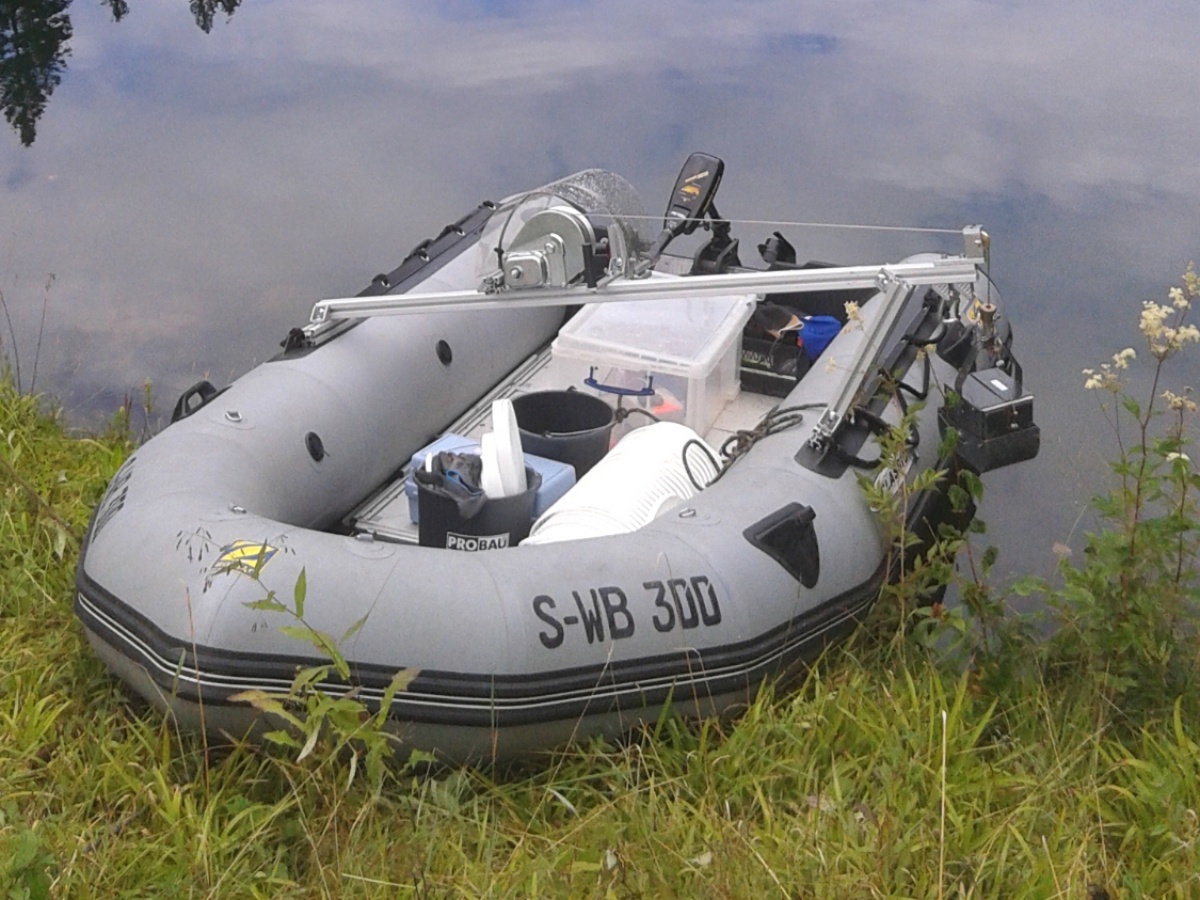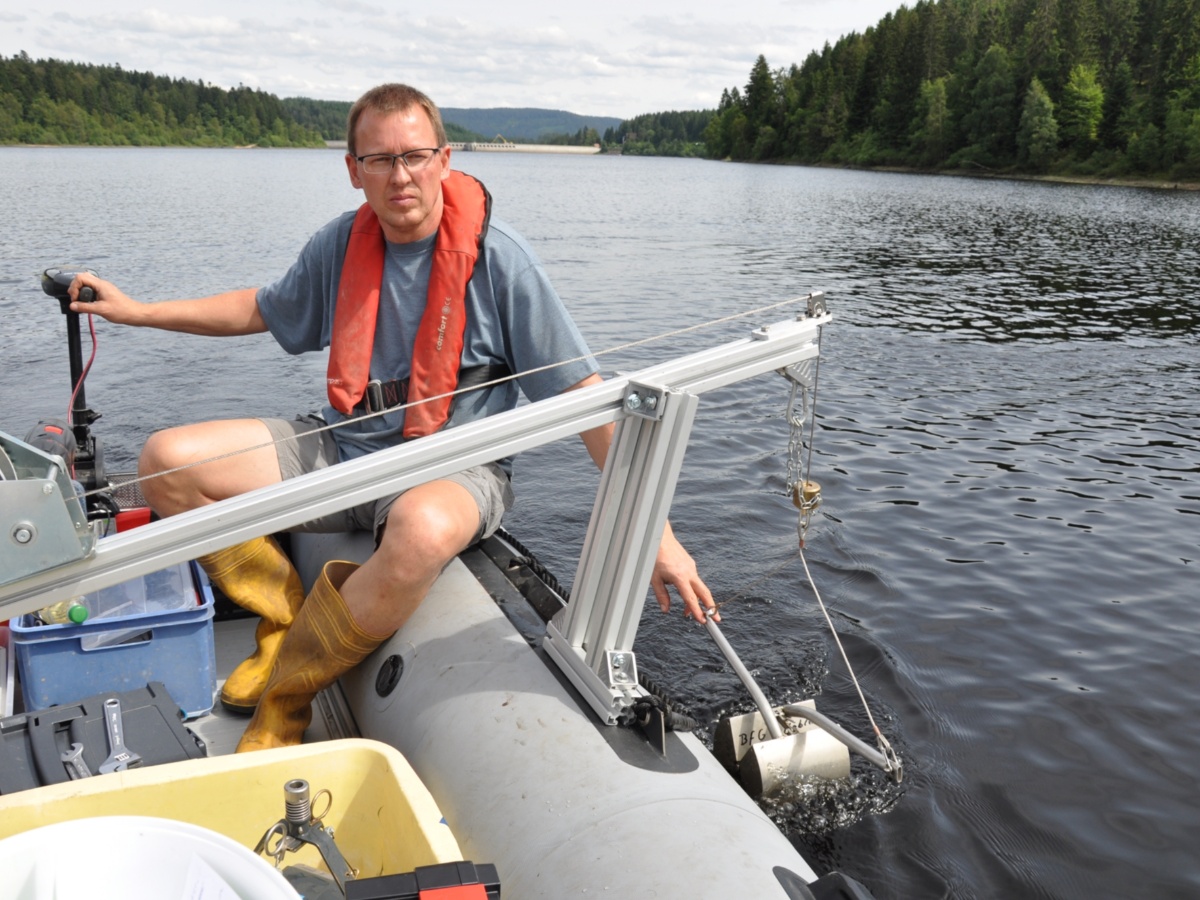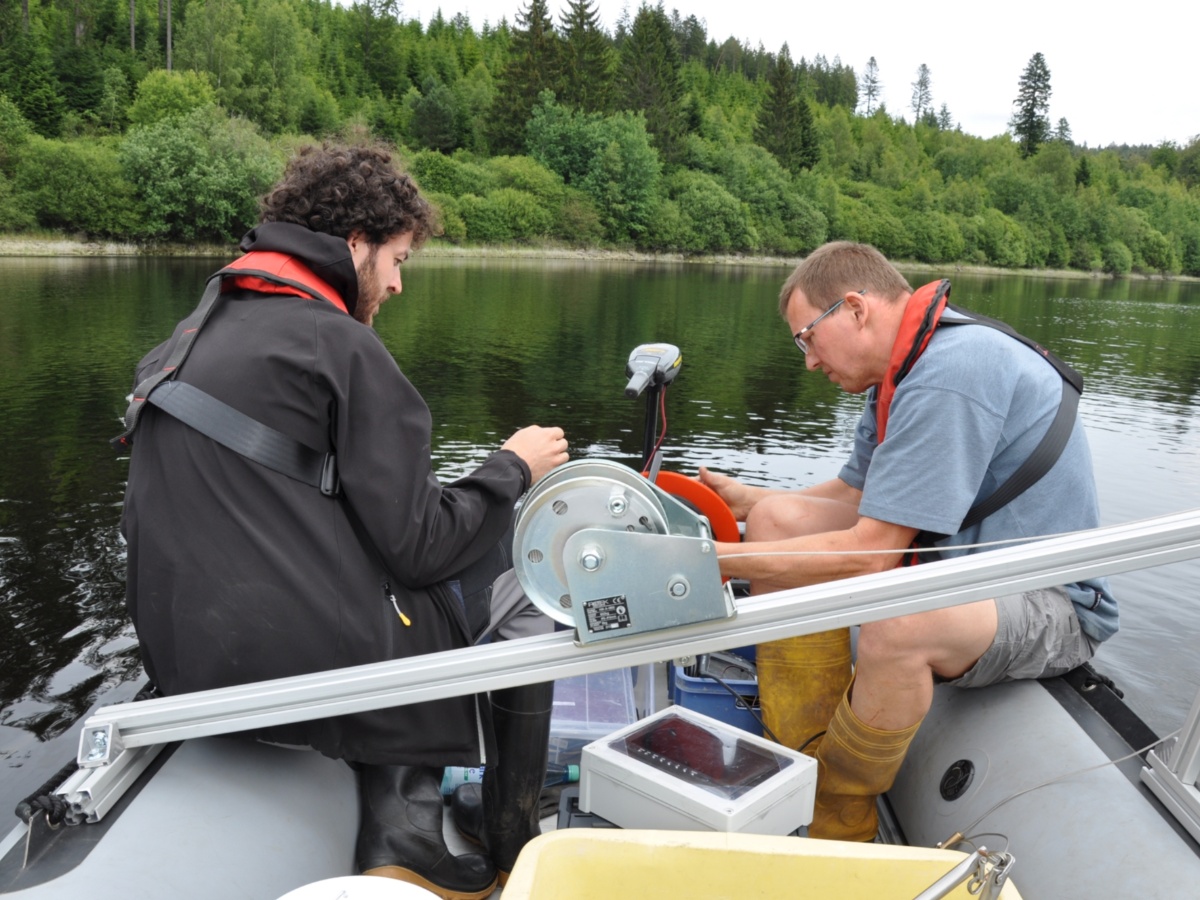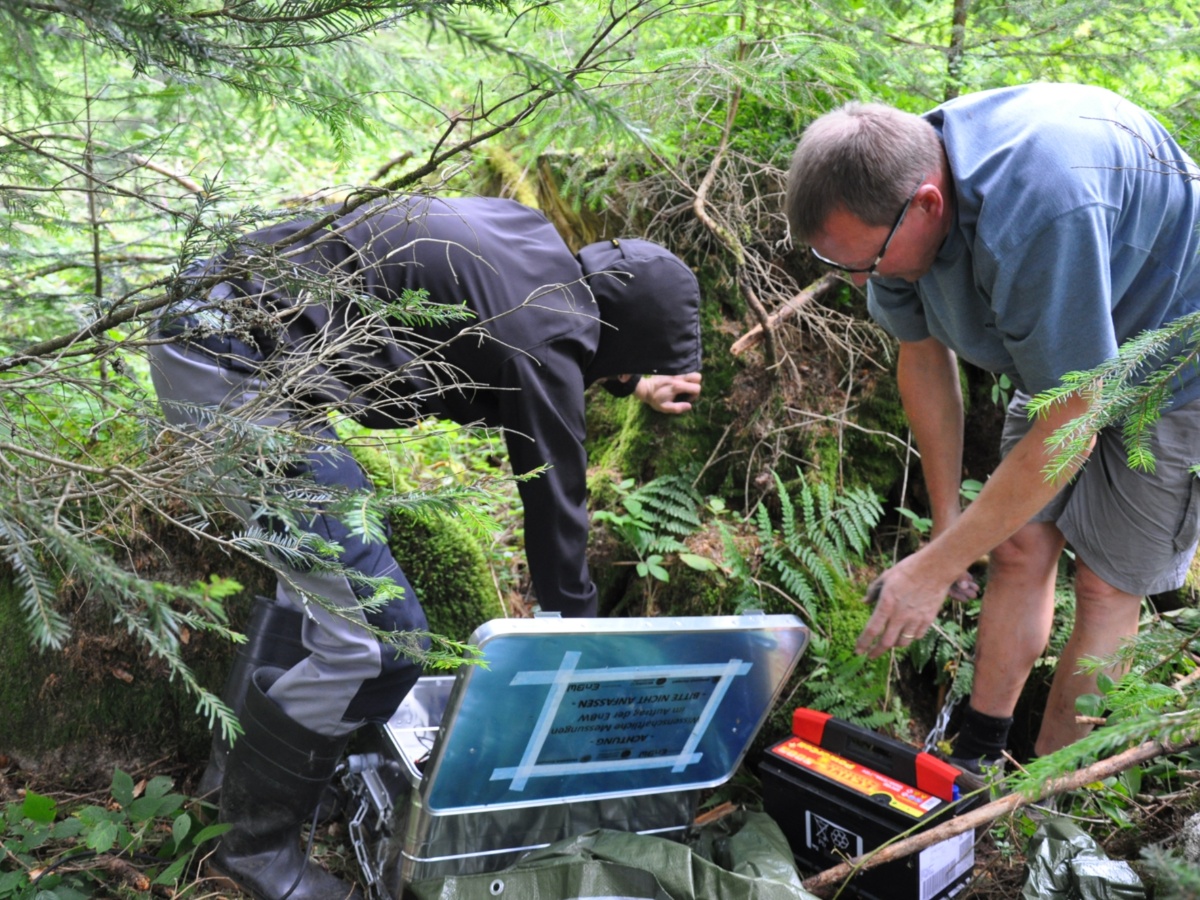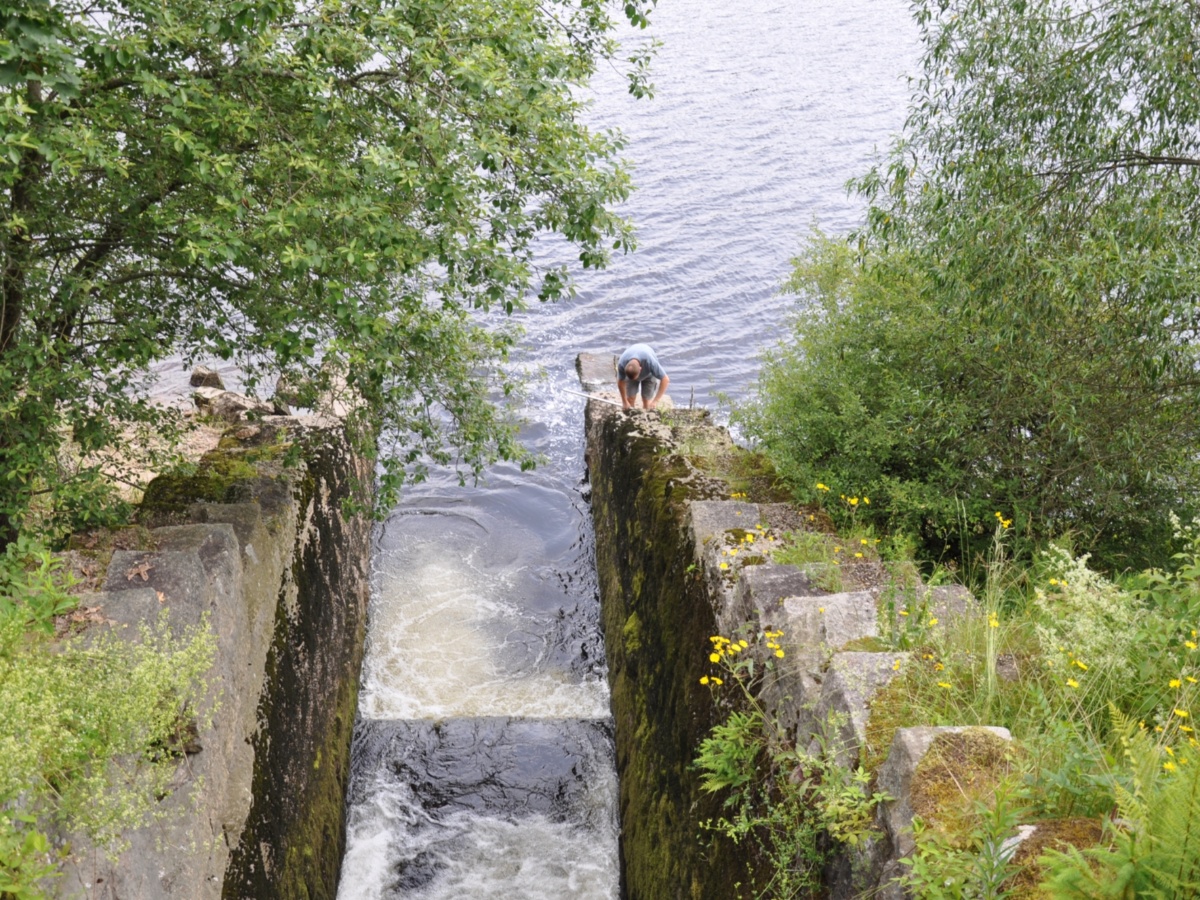Sediment sampling at the Schwarzenbach Reservoir 2019 / 2020
If the amount of sediment deposits in a reservoir reaches a critical limit, the reservoir needs to be flushed to maintain the reservoir’s storage capacity, as well as to prevent the abrasion of hydroelectric equipment. During reservoir flushing, the sediment is removed due to the eroding power of flowing water. The greenhouse gas methane is produced by microorganisms in sediments and is therefore released with the eroded sediment, eventually ending up in the atmosphere. In order to estimate the potential amount of methane that is released due to reservoir flushing, the vertical distribution of methane needs to be investigated.
For this reason, we conducted measurements for multiple days at the Schwarzenbach reservoir in the course of three field campaigns in April 2019, as well as June and September 2020.
On site we went out with the boat to take sediment cores at appointed positions. We used a “gravity corer” to retrieve sediment cores. This gravity corer was connected to a plastic tube and lowered to the sediment surface manually with a rope. Due to the gravity corers weight the plastic tube is able to enter the sediment. During impact, the rope tension relaxes, which activates a mechanism that closes the upper end of the plastic tube, thus creating a vacuum. Alongside sediment cores we conducted other measurements, such as water sampling in different depths and temperature profiling in order to monitor the methane concentration and the temperature in the water column.
As soon as possible, the retrieved sediment cores were processed at the shore. Through predrilled holes in the plastic tube, sediment samples were taken at different depths using modified syringes. Each sediment sample was transferred into a flask, enabling the liquid part of the sediment, the so-called “pore water”, to separate from the solid particles of the sediment. Shortly after, a sample of the pore water was moved to another flask to enable the methane to dissolve from the pore water into the gas phase inside the flask. The methane samples remained in this state until the measurement of methane concentration in the laboratory.
This procedure was repeated for many sediment cores in the course of several days. For us, this meant a lot of work. However, the great view from our working station and the beautiful landscape compensated us plenty.
Field trips Franconian Lake District summer/winter 2018
The goal of this field trip was to collect empirical data from stakeholders and their interests in the area. Since there are manifold interests, the idea was to contact people in key positions, as their knowledge and interests can be transferred to certain groups of stakeholders. These so-called experts were interviewed in two campaigns in summer and winter 2018. Furthermore, the active approach towards randomly chosen people generated a dataset of questionnaires, which gave an impression of the general image among the riparian in the surrounding area. A GIS analysis of the CLC dataset was complemented by inspections of the local infrastructure to identify distinct land use validations.
A total of 22 semi structured interviews were held in person, mostly at the properties of the interviewees. The professions of the interviewees reached from touristic, over agricultural, to management and administration. This enabled the researchers to develop a holistic picture of the local affairs around the reservoir system.
The dataset was enhanced by a simultaneous online acquisition of 609 media articles in the local newspaper (Nürnberger Nachrichten), in order to be able to reproduce the timeline of dominating discourses around the project. The main discourse was about the economic and ecological consequences of the reservoirs with a focus on the frequently occurring cyanobacteria blooms and negative consequences for the touristic sector. The results can be found in: Daus et al. 2019 (https://doi.org/10.3390/w11122469).
The following figures will give you an impression of the field campaign. With the personal rights of the interviewees being high priority, it was consequential that there where no pictures taken within the course of the interviews.
Application of Frahm Sediment Sampler at Kleiner Brombachsee 2017
Within the project CHARM, an alternative method for the extraction of undisturbed sediment cores from large water depths should be developed to replace the current approach which requires cost-intensive diving missions.
During the International Symposium on River Sedimentation 2016 in Stuttgart we made contact with the company MBT (Meerestechnisches Büro Turla GmbH, Kiel) which offers a sediment core sampler - "Frahm-Lot" - for the extraction of sediment cores from large depths.
The “Frahm-Lot” was initially developed at the Leibniz Institute for Baltic Sea Research in Warnemünde (IOW) for the extraction of deep sediments. It is now built under license and distributed by MBT. Core sampling is carried out with PVC-tubes, which have a length of up to 100 cm and a diameter of 10 cm. For an application, the tubes can be easily fixed and released to and from the device with a quick-action connector. A lid and a movable clasp for the bottom can be locked in position before the sampling activity starts. Afterwards, the prepared device can be lowered towards the reservoir bed. Upon impact with the bed, the tube gets pressed into the sediment due to its own weight. Simultaneously, as soon as the rope tension declines, the lid and the movable clasp release and thus enable the removal of the "stabbed" sediment. As soon as the sampled core leaves the sediment upper edge, the clasp closes completely and prevents the sediment from escaping while the sample is lifted to the surface. This allows sediment cores to be taken to the surface without the loss of material. At the surface, the sediment core can be removed and prepared for transport.
Up to now, “the Frahm-Lot” has only been used in the maritime sector and therefore no experience was available for inland waters and for reservoirs. Together with MBT, a cooperation was established with the aim of testing the “Frahm Lot” in reservoirs.
On February 2, 2017 and May 29, 2017 a “Frahm-Lot” from MBT was tested at the reservoir Kleiner Brombachsee by "Work Package 1 - Sediments".
After the first tests, the “Frahm-Lot” proved it could accurately take sediment samples from different water depths (5m to 20m), at places with varying sediment thickness (0.1m to 1.0m), and in areas with different sediment composition (clay/silt/sand mixtures).
We would like to thank MBT for the trust and the good cooperation and are looking forward to the next sampling of sediments cores with the "Frahm-Lot"!
Murgtalsperre Kirschbaumwasen 2016
In the week from November 14, 2016 to November 20, 2016, the reservoir “Murgtalsperre Kirschbaumwasen” (water collection of Rudolf-Fettweis-Werk) was emptied for inspection purposes. Due to the direct communication with EnBW AG, we had the possibility to enter the empty reservoir for sediment core removal on November 15, 2016.
In the empty reservoir, sediment cores could be removed with only a small spatial distance between the samples (e. g. nine cores within a field of only 2 m x 2 m). The aim of the sampling and the subsequent investigations was to investigate the spatial heterogeneity and composition of reservoir sediments. This naturally occurring heterogeneity of sediment deposits presents a challenge in quantifying the sediment properties. During the CHARM project, it is planned to carry out further core sampling at the same location in order to compare saturated sediment samples with the drained cores from 2016. This can be particularly important in terms of the changing erosion stability. The knowledge can be subsequently used for sustainable reservoir management.
Talsperre Kleine Kinzig 2016
On August 9, 2016 and August 10, 2016 a two-day pre-investigation of "Work Package 1 - Sediments" took place at the “Talsperre Kleine Kinzig”. The aim of this study was to measure the bathymetry of the reservoir using an echo sounder and to sample the surface sediments of the main reservoir with a grab sampler. In addition, we received an introduction to the “Zweckverband Wasserversorgung Kleine Kinzig“ during a site inspection.
We would like to thank Mr. Biwer and Ms. Sommer of the “Zweckverband Wasserversorgung Kleine Kinzig” for their support during the CHARM project.
Schwarzenbachtalsperre 2016
The first two field inspections of "Work Package 1 - Sediments" at the Schwarzenbachtalsperre took place on June 21, 2016 and July 6, 2016. Measurements of the reservoir bed with an echo sounder and preliminary sedimentological investigations were carried out in order to obtain a first impression of the existing sediment composition. The sediments along the shoreline were investigated with poles and the surface sediments along the thalweg were sampled with a Van-Veen grab sampler and an Ekman grab sampler. The sediment samples were analyzed with regard to their particle size distribution to serve as an input for a three-dimensional numerical model. At the same time, a monitoring station was installed at the Schwarzenbach and Seebach to measure the suspended sediment concentration with the aim to quantify the natural sediment inputs. The two monitoring stations were operated over a period of 6 months in total (July to December).
Field visit Schwarzenbachtalsperre 2016
On March 17, 2016, Dr.-Ing. Jörg Franke from EnBW invited the CHARM-Team to a field visit of the “Rudolf-Fettweis-Werk”. In addition to an inspection of the Schwarzenbach reservoir, the dam, the intake tower, the two natural tributaries Schwarzenbach and Seebach, and the Raumünzachüberleitung (transition tunnel) with its water intakes were visited. Afterwards, an inspection of the lower reservoir “Murgwehr Kirschbaumwasen" (water collection) and the lower reservoir near Forbach (compensation purposes) took place. Finally, the power house was visited to examine the installed machinery.
From this guided field visit we were able to get a detailed picture of the “Rudolf-Fettweis-Werk” and its mode of operation.
We would like to thank EnBW AG and especially Dr.-Ing. Jörg Franke for the informative insights and the support during the CHARM project.


